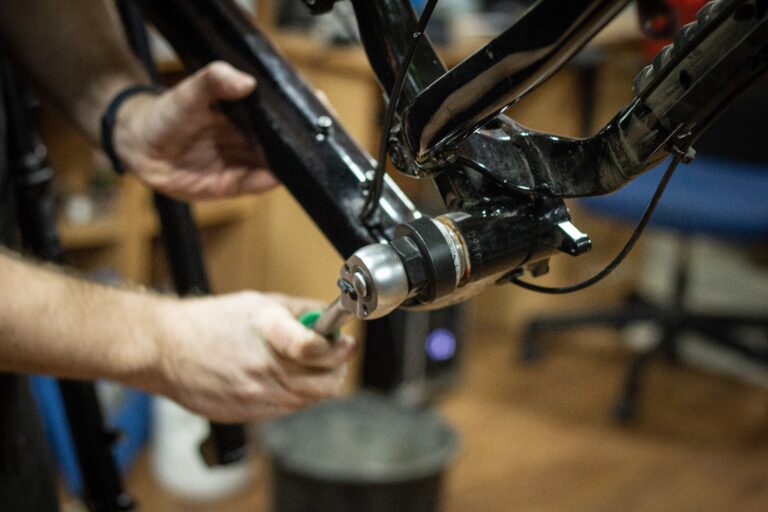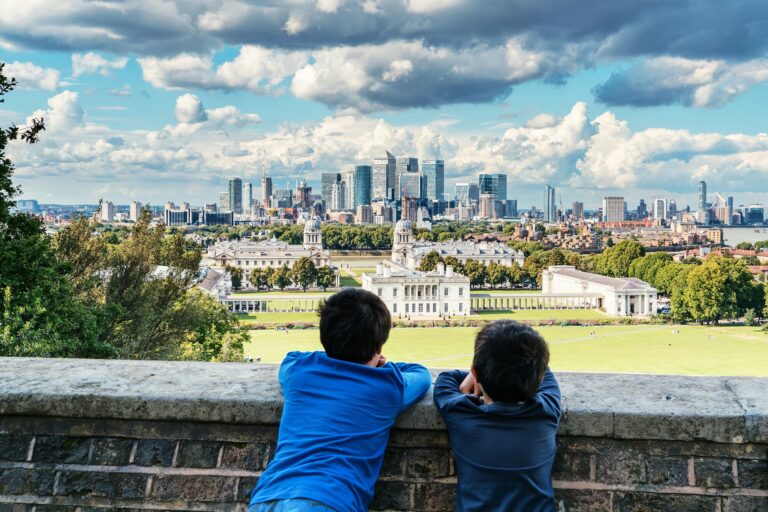
Redistribute Resources, Eliminate Waste: Circular Economy – Part One
A Circular Economy is an alternative economic model focused on the redistribution of resources and elimination of waste, for the betterment of both people and the planet. But is it achievable in a growth obsessed world?
We continue our series investigating alternative economic models that move away from the ‘growth’ mindset. Here, in the first of two parts, we explore Circular Economics.
“Closed-loop” Economy
The idea of a “closed-loop” economy has been around since the 1970s, when it was proposed to the European Commission. It focusses on extending the life of products and selling services, ensuring economic competitiveness, whilst saving resources and minimising waste. This received a warm reception from policymakers and led to the creation of the EU circular economy package. However, the circular economy package has since been criticised as lacking any clear assessment of how it performed in practice.
In the 21st century, more defined models of circular economics have emerged, such as the one proposed by the Ellen MacArthur Foundation.
In the following sections we will unpack the circular economics model proposed by the Ellen MacArthur Foundation. We will also explore how addressing population growth and overconsumption are vital elements to consider in any potential “degrowth” world.
What is a Circular Economy?
“The circular economy is a system where materials never become waste and nature is regenerated. In a circular economy, products and materials are kept in circulation through processes like maintenance, reuse, refurbishment, remanufacture, recycling, and composting. The circular economy tackles climate change and other global challenges, like biodiversity loss, waste, and pollution, by decoupling economic activity from the consumption of finite resources.”
Ellen MacArthur Foundation
Eliminate waste and pollution
Currently, our linear economy operates in a “take-make-waste” system. Raw resources are extracted from the Earth, manufactured into products that are eventually discarded as waste. Consumers are then encouraged to buy new products to replace the old. Due to inefficient recycling systems, most waste ends up in landfills or burnt in incinerators. Both contribute to greenhouse gas emissions causing climate change.
This economic structure operates on the false premise that the earth has infinite resources and infinite capacity for waste. When it’s clear by the effects of the climate crisis, thousands of species on the brink of extinction, raw sewage and microplastics polluting our rivers and ocean – that the Earth has finite resources that exist within a fragile ecosystem.
By shifting our mindset, we can treat waste as a design flaw.”
Ellen MacArthur Foundation
In a circular economy, any new product that is created must be designed to allow the materials to re-enter the economy at the end of the product’s lifespan. Products could be circulated by being maintained, shared, reused, repaired and, as a last resort, recycled.
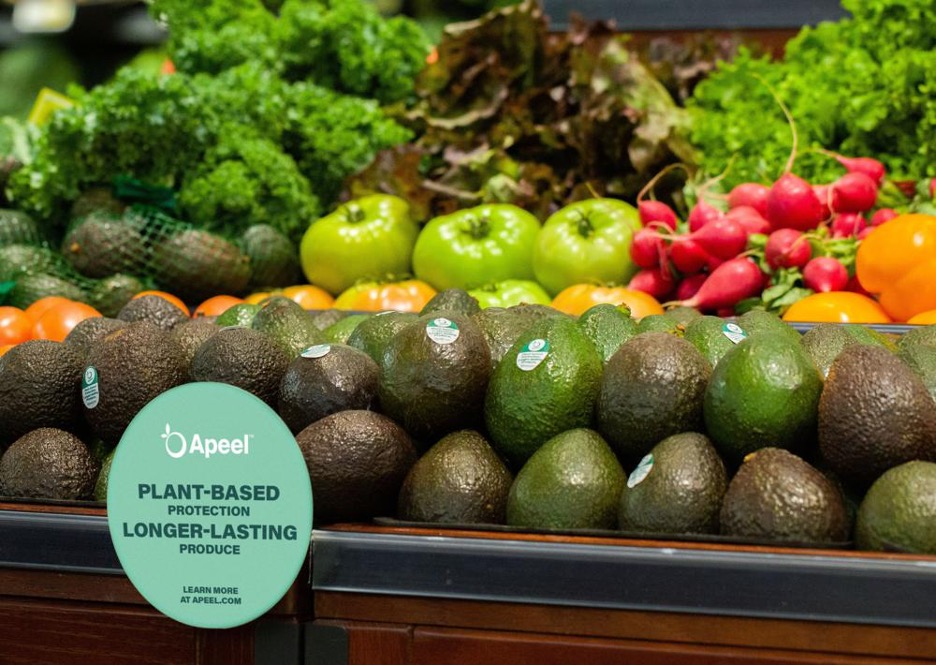
Some companies have already come up with creative designs to eliminate waste before it is even created. Apeel is a company that has invented a layer of edible, plant-based coating that can be applied to fresh produce. This mimics and enhances the natural defences of fruit and vegetables. This slows down the two main things that cause groceries to spoil – water loss and oxidation. Apeel can be delivered as a powder, then when mixed with water at packaging centres, can be applied to fresh produce. Fruit and vegetables treated with Apeel stay fresh two to three times longer. This also removes the need for single-use plastic packaging and eliminating plastic waste.
Circulate products and materials
The second principle of the circular economy is to circulate products and materials at their highest value. For example, an iPhone is at its highest value as an iPhone, so as a company Apple would possess a duty to design iPhones to have a long lifespan, as well as provide services to repair phones to maintain them at their highest value for the longest time.
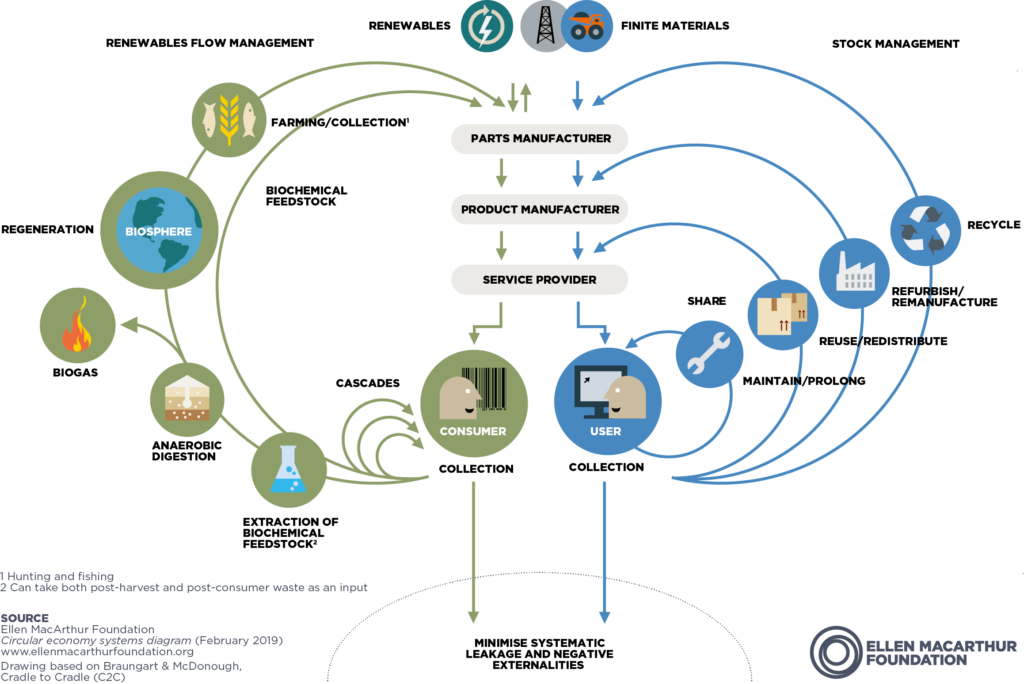
When products can no longer be used, they can be recirculated in the economy at their highest value as components or raw materials. For example, when an iPhone is beyond function as a phone, then it can be dissembled, and the precious metals and electronic components could instead be redistributed to be remanufactured into other products. For such a thing to occur would require Apple as a company to design iPhones with this circulation in mind, returning to the first principle of Circular Economics.
Of course, this system cannot be applied to organic materials, that cannot be remanufactured in the same way. The Ellen MacArthur foundation instead defines two different cycles on how products can be circulated through the economy – the technical cycle and the biological cycle.
Technical Cycle:
The technical cycle applies to manufactured inorganic goods, like an iPhone or a washing machine. The most effective way of retaining the value of these products is to extend their lifespan through conscious design and repair services. Eventually, when these products can no longer be repaired, then their component parts can be broken down and remanufactured.
Biological Cycle:
Food and other organic materials will inevitably decay and cannot be reused in the same way as inorganic materials. But their value can be circulated back into the economy through the biological cycle. By composting waste food this can produce fertile compost, cycling valuable nutrients such as nitrogen, phosphorous and potassium back into soil. That then helps fertilise land to grow more food or help regenerate nature.
In addition, some organic materials are more long-lasting, such as cotton clothing or wooden furniture. These materials can be maintained, reused and repaired for longer. Eventually, when they reach the end of their lifespan, they too can be composted. This transfers their value through the biological cycle.
By adopting the second principle of the circular economy we circulate finite materials in the economy for longer. This reduces demand for new primary materials, reducing pressure on the environment. Instead, materials are returned to the earth through the biological cycle.
Regenerate Nature
A circular economy focuses on regeneration rather than extraction. This reduces the demand for primary resources which means less deforestation, open-cast mining, and land clearing, giving back space for nature. Instead of continuously degrading nature in the search for new resources to extract, we can conserve more natural areas instead.
If we move to a regenerative model, we begin to emulate natural systems. There is no waste in nature. When a leaf falls from a tree it feeds the forest. For billions of years, natural systems have regenerated themselves. Waste is a human invention.”
Ellen MacArthur Foundation
Agriculture is cited as one of the main drivers of accelerating biodiversity loss. Intensive use of pesticides and artificial fertilisers wreak havoc on local ecosystems. Meanwhile, our growing population’s demand for more food means more land needs to be cultivated for agricultural expansion. This accelerates biodiversity loss and causes mass deforestation in some of the richest areas for biodiversity such as the Amazon rainforest.
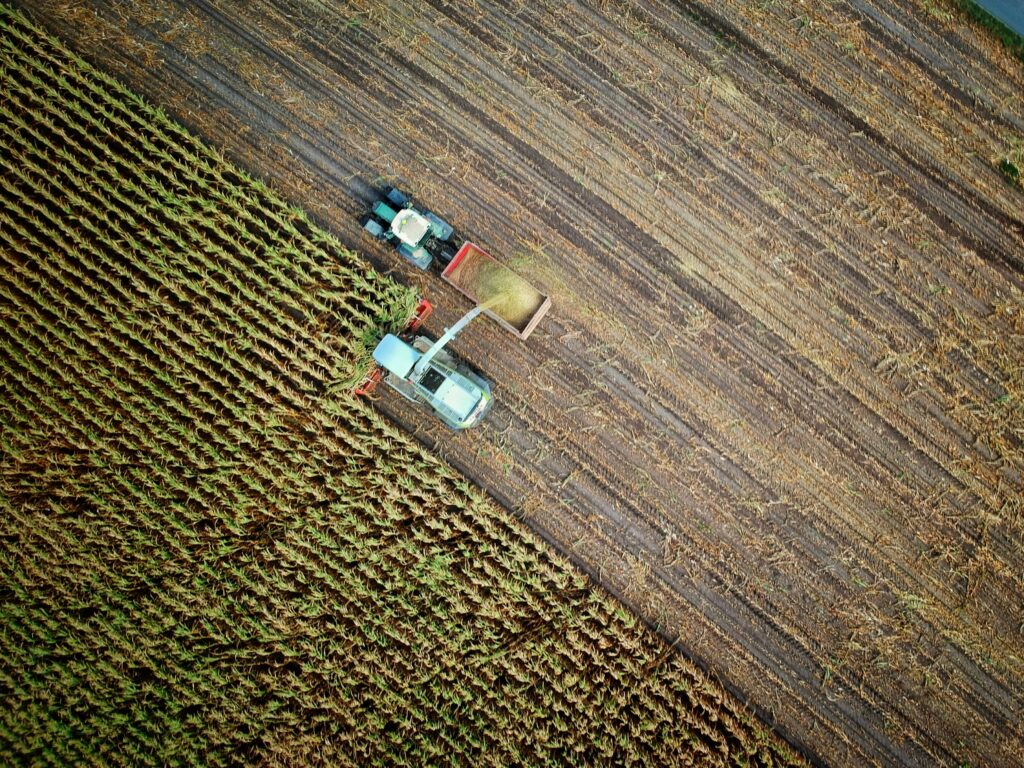
The circular economy calls for a shift to all economic systems, including the agricultural sector. Instead of industrial agriculture that relies on fossil fuel-based fertilisers, pesticides, and overextraction of fresh water, it would shift to a regenerative agricultural model.
Regenerative agricultural practices include agroecology, conservation agriculture, and agroforestry, where trees are grown around or within crops and pasture. This results in farmland that more closely resembles natural ecosystems like a forest, providing habitat for wildlife and improving biodiversity, as well as taking advantage of the benefit of natural systems like shade and green water storage.
By keeping products and materials in use, less land is required for sourcing virgin raw materials, e.g. from mines. If we gradually decouple economic activity from material extraction by keeping materials in circulation after use, more and more land can be returned to nature and rewilding can happen.”
Ellen MacArthur Foundation
_________________________________________________
This is part one of Redistribute resources, eliminate waste: the Circular Economy.
Part two is available here.

